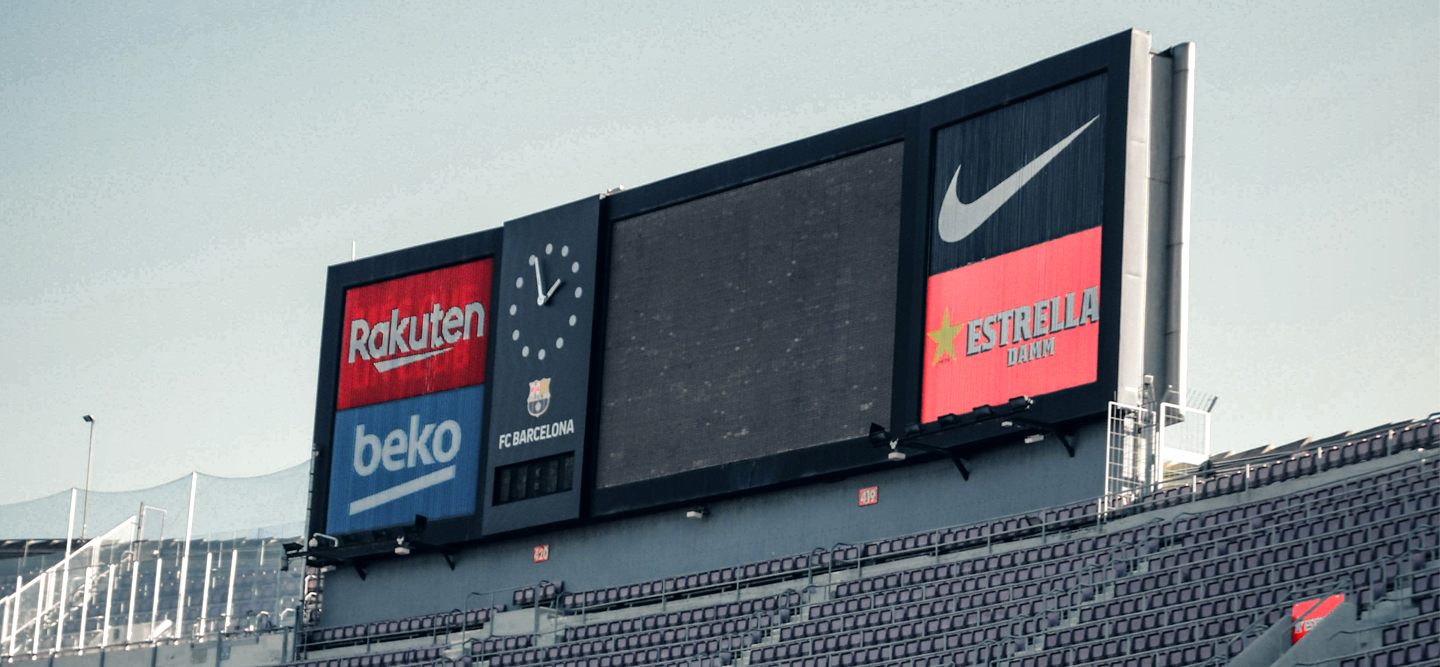August 15, 2022
Brand Awareness Strategies to Get Your Business Thriving

It’s not easy to get your brand’s name out there. Today’s market is incredibly saturated, and with new businesses arriving on the scene, standing out in the crowd takes a lot of work. Enter brand awareness strategy. Whether you’re building yours from the ground up or looking to fine-tune your brand awareness practices, keep this list of innovative ideas on hand. We’re ready to help you become a household name.
What is Brand Awareness?
The concept of brand awareness is two-fold. It refers to how recognizable your brand is to potential customers, as well as how well they can correctly associate your brand with your products or services.
So, maybe you’re not as well-known as brands whose names become synonymous with what they’re offering (Kleenex, Q-Tips, etc.). But brand awareness comes in simpler, smaller scale forms. Customers might know exactly what your business is known for. Maybe they’re choosing your business over others, even if yours isn’t the cheapest one. When consumers are aware of your brand, they’re more likely to want to learn more about it.
Why is Brand Awareness Important?
Fostering Trust
We’re always the first to tout the importance of customer trust, and brand awareness is one of its building blocks. Consumers who trust your brand are more likely to purchase multiple times. This will allow you to have customer stories to share, while creating a loyal fan base of brand ambassadors who are going to do a lot of the groundwork for you
Creating Association
Sometimes, the name of a brand becomes synonymous with the actual product. Think of the many times you’ve thought to reach for a Kleenex, or the way you spring for a Band-Aid if you get a papercut. These brand names are called proprietary eponyms and are pretty much the highest level of brand awareness that can be achieved. This association of products and actions should be your ultimate goal. The marketing practically does itself.
Building Brand Equity
We’ve touched on customer trust already, but it goes hand in hand with the concept of brand equity. Brand equity, or your brand’s value, refers how your customers perceive and experience your brand. When consumers see your business in a positive light, that means you have positive brand equity. This allows you to consider charging higher prices due to higher perceived value, expand your product line, and see a greater social impact.
Prioritizing positive experiences can get you there. Drawing your customers in and encouraging repeat purchases help to establish loyalty, and they might even begin to prefer your brand over others. Recommendations to family and friends, positive associations, and consumer staple status are just around the corner.
If You’re Building Brand Awareness from the Ground Up:
Every company’s brand awareness strategy has to start somewhere. If you’re creating yours from scratch, here are four pillars that can help you get up and go.
Be Human
The most successful brands are often some of the most relatable. Maybe their social presence is especially inspiring, or perhaps their tone of voice resonates well with consumers. All in all, you have to show that you’re more than just a company that offers a product or service. How does your business define itself? What would you say when someone asks for a short description of what you do? Establish traits that go along with your brand’s mission and put those forward in everything you do.
Be Social
Social media is an incredibly powerful tool for brand awareness. It allows you to interact with your customers directly by sharing content, leaving comments, starting conversations, and helping to resolve issues. When you go to create your social media playbook, consider taking on a viewpoint of someone making friends. This way, you’re more likely to connect with consumers outside of trying to close the sale.
Tell Worthwhile Stories
We’re never one to shy away from the art of storytelling. Whether we’re helping our clients promote their products or solidify their brand positioning, we believe that a good story lies at the heart of every brand awareness initiative.
There are a lot of places to pull this from as well. Your Founder’s story, the tale of how your first product came to be, or a narrative of how your business made it are all strong contenders.
Whatever narrative you choose, your marketing should reflect it. This way, you have something to ground your efforts in, and you’ll have the opportunity to market your brand as well as your products.
Encourage Sharing (and Make It Easy!)
For many consumers, word of mouth is incredibly influential. According to BigCommerce, 74% of consumers look to word of mouth to influence their purchasing behaviors. An important element of word of mouth is your customers’ ability to share your content. From blog posts to product pages, make your collateral easy to share. Consider your content amplified!
If You’re Fine-Tuning Your Brand Awareness Strategy:
Strong brand awareness doesn’t happen overnight. A successful strategy is comprised of multiple moving parts, and a lot of those pieces aren’t directly related to customer acquisition. Let’s get into a few ways to spice up your current plan.
Try Guest Blogging
If you’re already creating top-notch content, guest blogging is an easy way to get it in front of more eyes. You can tap into the traffic that’s already heading to another website in your niche. This helps you present yourself as a human first; the priority here should be offering helpful content, not promoting your product or service. Plus, you’ll get your name known in your industry.
Invest in Co-Marketing and Partnerships
Co-marketing refers to two or more companies coming together to create a campaign and reap the benefits of their combined audiences, efforts, and talents. From social media giveaways to a collaborative launch that breaks the internet, you’ll want to work with brands that already emit strong trust signals.
The brands you choose for these efforts also allow you to highlight what you bring to the table within the scope of the market. If you get the chance to work with a well-known brand, take it! Consumers will start to associate your brand with them and view you in a positive light.
Advertise, Advertise, Advertise
While advertising tends to put the emphasis on your product rather than your brand itself, it’s still very much a worthwhile investment. Online advertising, including paid social ads and PPC, is a great way to get the word out about your brand in an unassuming way.
Another option would be to tap into remarketing. These ads are specifically targeted to people who’ve visited your site but didn’t convert. They’re placed all around the internet on sites these users visit, and consumers will start to see you everywhere, helping you remain top of mind.
Choose a Logo that Represents You
There are several brands whose logos you recognize from a mile away. From McDonald’s infamous yellow arches to Nike’s signature swoosh, these symbols are known for their widespread use in their corresponding brands’ campaigns. Incorporate it into your design and product design for maximum cohesiveness.
Implement a Slogan
Your brand’s storytelling and content strategy should include a short tagline to serve as the cornerstone of your branding. While this is not the easiest task, it’s worth the work to boil down your brand into just a few words. It’s important to explain your products, what sets you apart, and why customers should ultimately choose your brand.
Offer Freemium
Think of all the times you’ve gotten to try a product before you bought it. Whether you snagged a sample in-store or took them up on a free trial, those brands gave you a little taste before you had to commit to a purchase.
Another way to get customers to dip their toes in is to offer freemium pricing. This business model allows consumers to use your products for free, while charging them for more premium or ad-free services. Typically, freemium packages will show your brand’s watermark on the public-facing parts of the product. Your consumers will then enjoy your services for free, and you’ll enjoy a little free advertising.
Sponsor Events
Most events you attend wouldn’t be possible without the help of brand sponsors. Just consider all of the branded pieces of merchandise you’ve gotten at the last convention, fair, or exhibition you were at.
Sponsorships like this are a great way to get your brand in front of at least thousands of eyes, and you’ll foster an association with events that go along with your brand’s passions and personality. Consistency is key here. When you sponsor events regularly, consumers will begin to see you as a leader in the field. Plus, it’ll become easier to nature any leads that may come in.
Incorporate Influencer Marketing
The influencer marketing industry continues to be a powerful tool. In fact, according to BigCommerce, 17% of companies spend more than half their marketing budget on these efforts. So, why not get your own piece of the pie?
Inviting influencers in your brand’s niche can help increase brand awareness, encourage traffic to your site, and drive revenue. These folks have established a connection with a select group of consumers who trust them, so when they mention your products, they’re able to generate a decent amount of interest in your brand. Some of these partnerships may even turn into long-term working relationships!
Implement a Referral Program
Of all the brand awareness strategies we’ve gone over so far, this one is the heaviest customer acquisition play. We mentioned earlier how powerful word of mouth can be. Referral programs are an easy way to capitalize on your consumers’ existing relationships. By incentivizing customers to spread the word, you’ll be able to growth hack your business and save countless advertising dollars.
Final Thoughts
Your main goal should be building a loyal, engaged audience that would recognize your brand in a sea of competitors. They consistently choose your products or services, and they’re not afraid to spread the word. Strong brand awareness is the way to get there. From comprehensive advertising to a referral program that works, these techniques will have a major impact on your consumer perception.
Share this:












